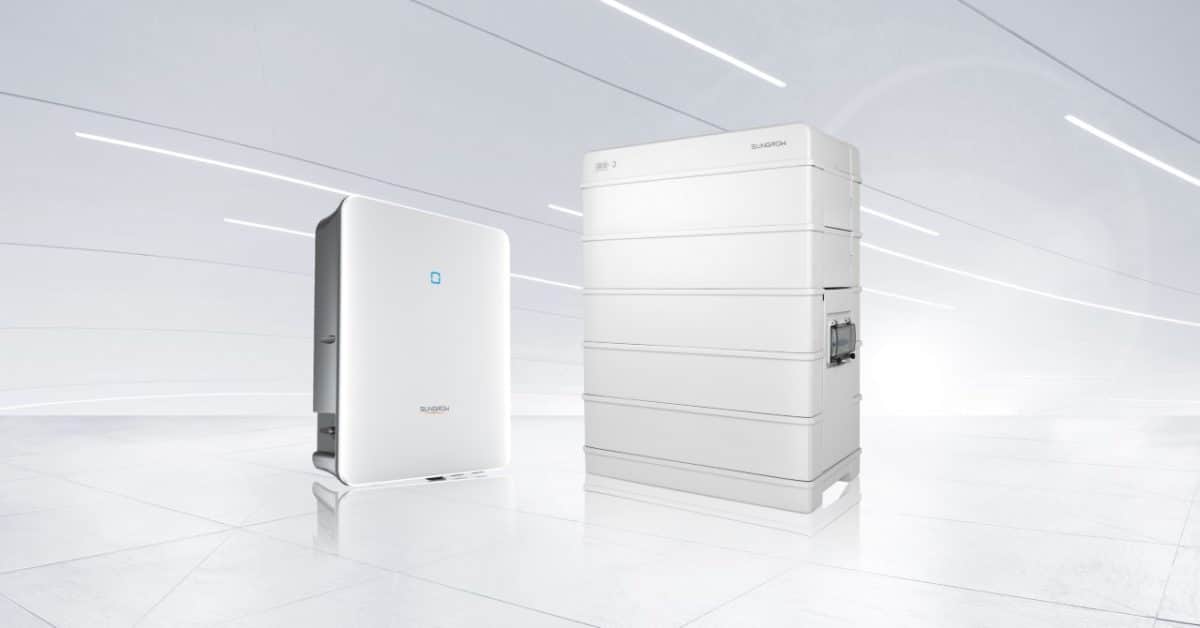Chinese power electronics company Sungrow has unveiled a new storage energy solution for rooftop applications that comprises a hybrid inverter and a high-voltage battery.
“The hybrid inverter is initially being launched in Europe and the combination of the inverter with the battery will be launched in Australia,” a company spokesperson told pv magazine.
The high-voltage SBR lithium iron phosphate battery uses LiFePO4 as the cathode material and has a storage capacity between 9.6 kWh and 102.4 kWh, depending on the number of modules.
A three-module device has a capacity of 9.6 kWh, a nominal voltage of 192 V, and DC power of 5.76 kW. Its short circuit current is 1,700 A and the continuous maximum charge-discharge current is 30 A. It measures 625x545x330mm, weighs 114kg, and features a 10-year performance guarantee. The battery uses natural convection as a cooling system.
The hybrid three-phase inverter, called SH5.0/6.0/8.0/10RT, is available in five versions, with nominal AC power output ranging from 5 kW to 10 kW. Depending on this value, the device's efficiency spans from 98% andto 98.4%, and the European efficiency from 97.2% to 97.9%.
The product comes with two maximum power point tracking (MPPT) inputs while its MPPT voltage range is 150-950 V. Its maximum input current (DC) is 25 A and the maximum short circuit current ranges from 32 A to 48 A. It is equipped with IP65 protection, natural convection air cooling, and can be used in projects at altitudes of up to 4,000m, and in temperatures ranging from -25 degrees Celsius to 60 degrees Celsius. It is compatible with lithium-ion batteries and a battery voltage of 150-600 V.
Referring to the Australian rooftop PV market, Sungrow said that the proposed solution can help optimize self-consumption by storing excessive energy in the battery and perform as backup power, offering continuous power supply in case of a grid outage. “Besides, charging from the grid during off-peak and discharging at peak can be profitable. With an increasing number of residential systems connect[ed] to virtual power plant (VPP) networks, the solutions are compatible with multiple devices, benefiting the users from VPP business models immediately,” the manufacturer explained.
This content is protected by copyright and may not be reused. If you want to cooperate with us and would like to reuse some of our content, please contact: editors@pv-magazine.com.




Good information….
Without price data hard to assess if this is good or otherwise.
The issue in most solar panels home roof installations are the installers silence and leaving without updating you of the installed details.
It remains a secret impossible to access unless you check deliveries before installation.
The way to control your own solar return investment is almost impossible.
With rumours of being charged to export to the grid, the financial equation, in Aus, will alter significantly. Charging battery from grid at offpeak, would only be useful when panels weren’t operating, and perhaps multiple long heavily overcast winter days?
Anybody knows the release date for Europe?
Will the system operate if there is an outage in the daytime without the batteries ?.